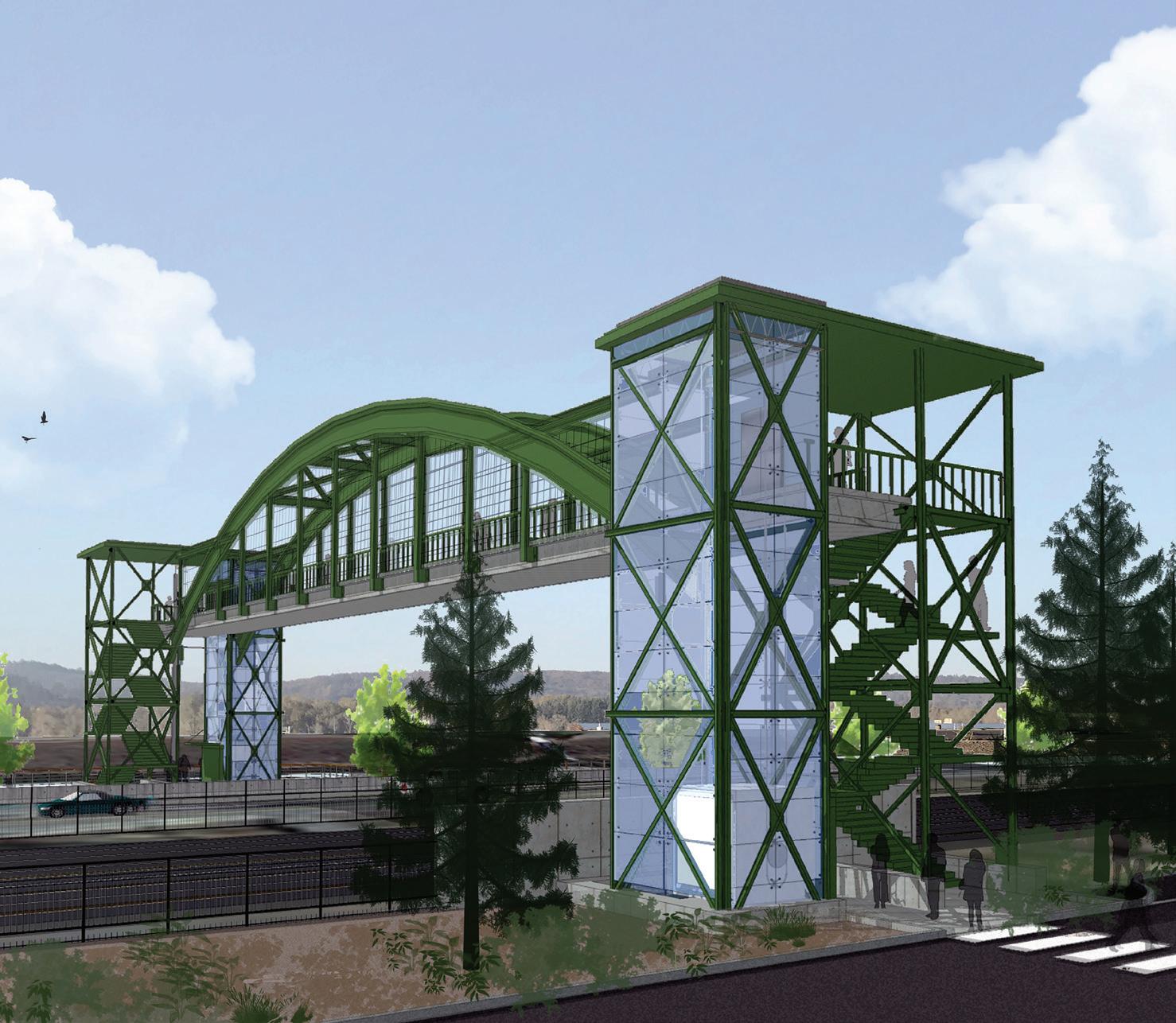
3 minute read
Port of Kalama
PORT OF KALAMA BEGINS DEVELOPMENT OF NEW PEDESTRIAN OVERPASS
ADA-Compliant ‘Kalama Crossing’ will highlight the beauty of the waterfront, the Port and the City of Kalama. Since the 1960s, Interstate 5 and BNSF railroad tracks have divided the Port of Kalama and the downtown core. A solution was designed and constructed in the 1970s, when a simple footbridge was constructed as a means of bypassing a nearly twomile long walk. However, the structure was never designed to be ADA-compliant, cannot accommodate bicycles and has been described by many residents as difficult—even disorienting. The Port of Kalama’s waterfront has become a destination with parks, walking paths, amphitheater, marina, interpretive center and McMenamins Kalama Harbor Lodge—nearly $20 million in Port investment in the last six years alone. The only thing missing? A safe and userfriendly means of connecting the Port and its amenities to the City of Kalama and its downtown core of small businesses. Along with the improved accessibility an updated bridge can provide, the economic opportunities for local businesses could be tremendous. Patrons of McMenamins, along with future visitors to the Port’s tourism facility and ACL’s cruise passengers, have the potential to bring a wealth of new spending into the area. Bridging the gap between the Port of Kalama and the city with a fully-functional, aesthetically pleasing pedestrian overpass is not only needed, but is necessary for continued growth. Parking has also become an issue in recent years. Simply put, there just aren’t enough spaces to accommodate new visitors to our area. To that end, the overpass proposal includes plans for an additional 100 parking spaces and renovated streetscapes on the downtown side of the structure. These new spaces will allow use for both City and Port events, boosting the economic activity in the region. As you can see from the concept art above, the new span will feature elevators on each side as well as shorter
Advertisement
SURGE OF SOYBEAN EXPORTS AT PORT OF KALAMA SETS NEW RECORD
staircases. Estimated costs of the new pedestrian overpass total $5 million, and the Port has requested $2.2 million in state funding for the project. When complete, the new overpass will better integrate the downtown core with the Port, provide a safe means of crossing, beautify the area and provide lasting benefits for all. Stay tuned for more on this exciting project! The Port of Kalama recently added another impressive milestone to its resume as it exported more soybeans than any other west coast port in the U.S. last year, according to a recent report from the Pacific Merchant Shipping Association. Combining totals from the Port’s two grain elevators, TEMCO and Kalama Export, the Port of Kalama exported nearly 5 million metric tons of soybeans, or 33% of all U.S. west coast soybean exports— edging out the Northwest Seaport Alliance Ports of Tacoma and Seattle (32%). “Both TEMCO and Kalama Export are the absolute workhorses of the Port,” said Port Commission President, Randy Sweet. “Every year we continue to be amazed at how well they perform, and it speaks volumes about their operations and hardworking employees.” Even more impressive, the Port of Kalama exported a total of 15 million metric tons of cargo last year, the majority of which were agricultural products. This is nearly 15% more than 2019 totals and 50% more than just ten years ago. Despite the pandemic, the Port’s successes in 2020 once again earned it the title of third largest exporter on the west coast (just behind the Ports of Los Angeles and Long Beach, California) according to the latest figures from the US Census Bureau’s USA Trade Online. Operating at the Port since the 1960’s, the privately-owned TEMCO grain elevator is a joint venture of Minnesota-based agricultural companies CHS Inc. and Cargill. Kalama Export is also privately owned and is a joint venture of Illinois-based Archer Daniels Midland Company and ConAgra, Inc. Both grain elevators at the Port of Kalama have seen a surge in exports due, in part, to major upgrades of their facilities in 2014 and 2010, respectively.










